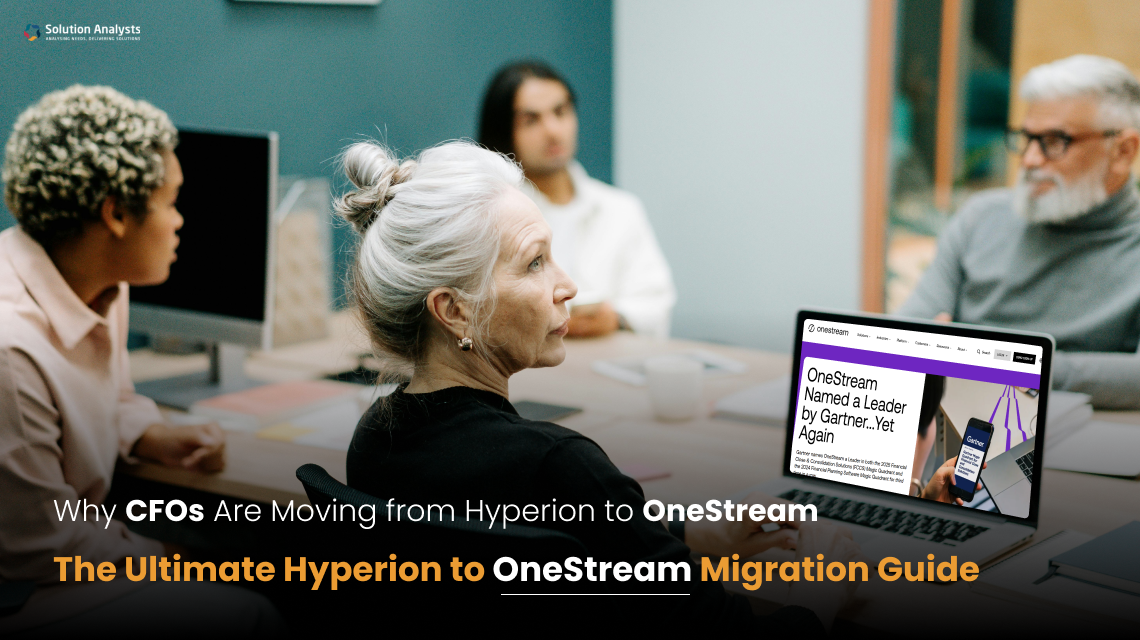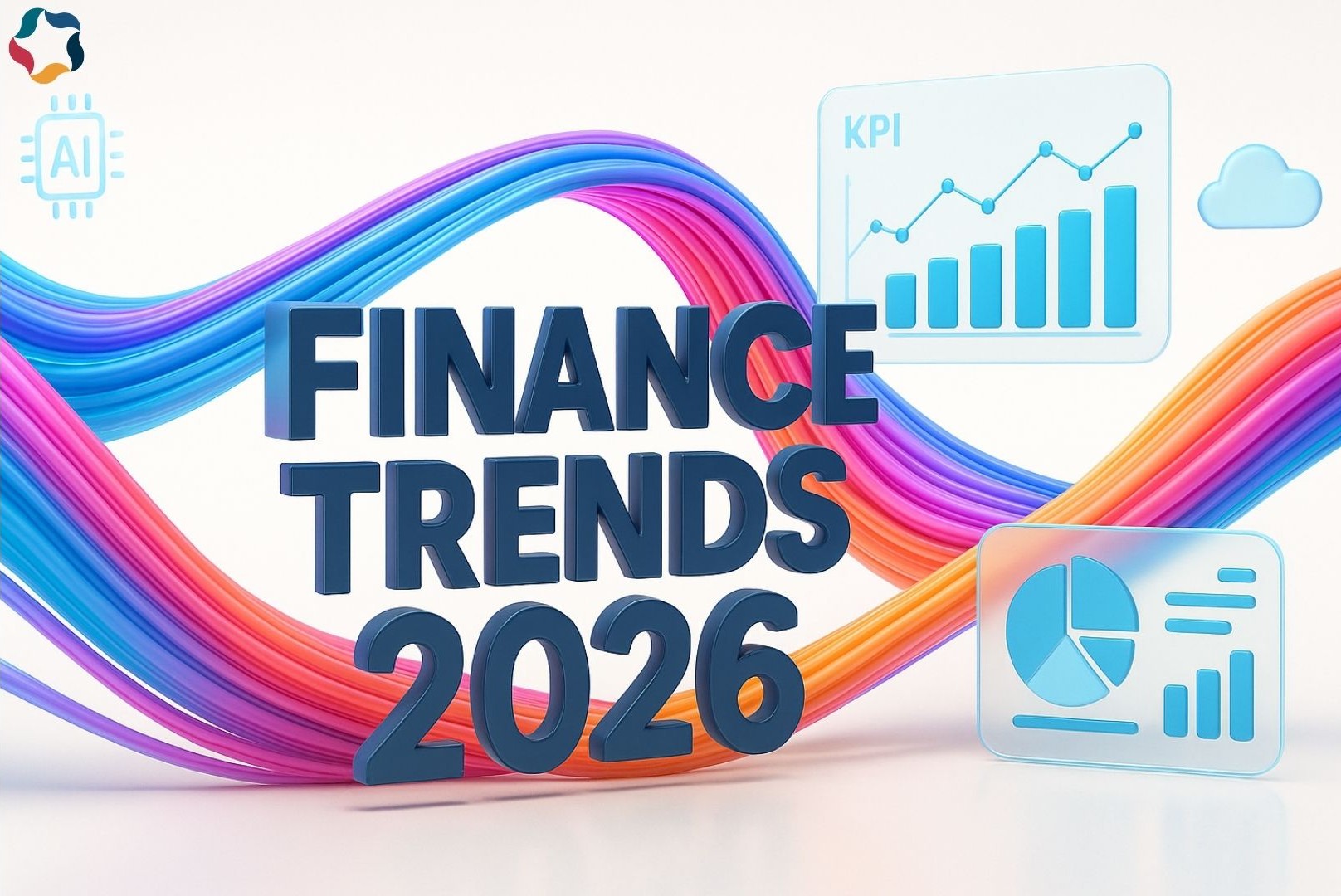
Table of Contents
For over a decade, Oracle Hyperion was the gold standard for enterprise performance management (EPM). But in today’s fast-evolving financial environment, where agility, real-time insights, and unified planning are essential, Hyperion is starting to show its age. That’s why more and more CFOs are embracing the Hyperion to OneStream migration not just as a system upgrade, but as a strategic leap toward financial transformation.
The Changing Needs of Modern CFOs
Today’s finance leaders are expected to deliver more than just reports they need to guide business decisions with data-driven insights, scenario planning, and predictive analytics. Unfortunately, legacy systems like Hyperion were built in a different era and fall short in key areas:
• Siloed architecture that requires multiple modules and manual reconciliation
• Limited scalability for multi-entity, global operations
• Heavy reliance on IT teams for upgrades, customizations, and data integrations
• High ownership costs and complex on-premise infrastructure
In contrast, OneStream offers a unified, cloud-first platform that aligns perfectly with the modern CFO’s mission: control, speed, and visibility.
What Is OneStream and Why Is It Better?
OneStream is a modern, unified corporate performance management (CPM) solution that replaces fragmented tools with a single, extensible platform. It handles:
• Financial close and consolidation
• Budgeting, planning, and forecasting
• Reporting and analytics
• Account reconciliations
• Lease accounting
• ESG and tax provisioning extensions via MarketPlace solutions
This holistic functionality is one of the primary reasons organizations are prioritizing their Hyperion to OneStream migration. With OneStream, CFOs gain:
• Real-time visibility into financial and operational data
• Seamless consolidation across global entities and currencies
• Automation of manual tasks like intercompany eliminations and journal entries
• Integration with ERP and BI systems for a single source of truth
The Hyperion to OneStream Migration Process (Step-by-Step)
A successful Hyperion to OneStream migration involves a clear, phased approach. Here’s how most enterprises are making the shift:
1. Discovery & Assessment
Evaluate current Hyperion modules in use (e.g., HFM, Planning, Essbase). Identify pain points, integrations, and customization levels.
2. Migration Planning
Define objectives (e.g., faster close, unified reporting), scope, timeline, and resource allocation. Establish governance and a change management plan.
3. Platform Design
Configure the OneStream environment based on business structure chart of accounts, entities, and workflows.
4. Data Migration
Migrate metadata, historical data, and current configurations using OneStream’s data tools and connectors. Validate for accuracy and consistency.
5. User Training & Testing
Run parallel systems, conduct UAT (User Acceptance Testing), and train end-users on the new processes.
6. Go-Live & Support
Deploy OneStream in production with post-launch monitoring, support, and optimization as needed.
For many organizations, the entire Hyperion to OneStream migration can be completed in 4–6 months, depending on complexity and readiness.
Real-World Impact: What Businesses Are Experiencing
CFOs and finance teams who’ve completed their Hyperion to OneStream migration are reporting powerful outcomes:
| Result Area | Before (Hyperion) |
After (OneStream) |
| Financial Close Time | 7–10 Days | 2–4 Days |
| Manual Journal Entries | 100s across entities | 80% automated |
| Consolidation Accuracy | Reconciled manually | Real-time, system-driven |
| Planning Flexibility | Static templates | Dynamic scenario modeling |
| Reporting Turnaround | Hours/days post-close | Instant |
Key Benefits of Hyperion to OneStream Migration
Let’s summarize why CFOs are confidently making the shift:
• Unified Platform: OneStream consolidates multiple Hyperion modules into one solution
• Reduced IT Overhead: Less dependency on external consultants and internal teams
• Cloud Native: Built for the cloud, unlike Hyperion’s legacy architecture
• Real-Time Decision Making: Instant access to accurate, validated data
• Future-Ready: Scalable platform with continuous updates and innovation
Challenges You May Face (And Overcome)
Any transformation comes with hurdles. In a Hyperion to OneStream migration, you might encounter:
• Data mapping complexity: especially if Hyperion environments were heavily customized
• Change resistance: from teams used to legacy workflows
• Integration needs: with ERPs, CRMs, or data lakes
Conclusion
The shift from Hyperion to OneStream is more than a software migration, it’s a strategic move toward agility, transparency, and smarter decision-making. As CFOs are being asked to do more with less, OneStream delivers a unified, modern CPM platform that evolves with your business.
If your current tools are creating friction instead of insight, it’s time to reconsider. A well-planned Hyperion to OneStream migration can unlock new levels of financial performance and control.

Vidhi Patel
Digital Marketing Executive
Vidhi Patel is a Digital Marketing Executive at Solution Analysts, skilled in social media strategy, SEO, and content planning. She Works to grow digital presence and connect meaningfully with their audience across platforms.











 sales@solutionanalysts.com
sales@solutionanalysts.com solution.analysts
solution.analysts






